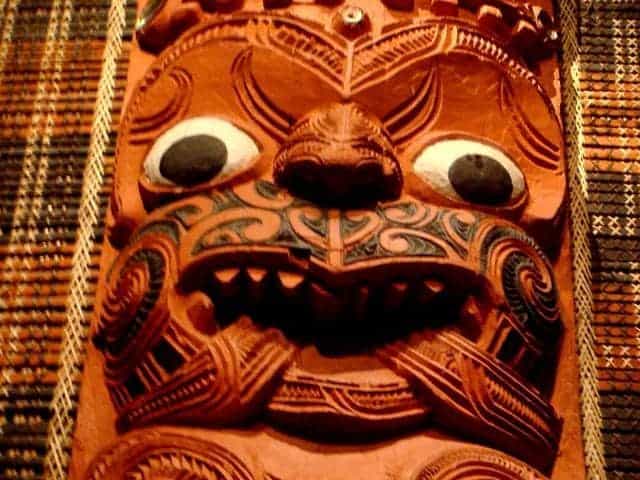Embracing Maori Arts: A Magical Journey for Parents and Kids
Hello, wonderful parents! Are you looking for a wholesome and educational activity to share with your kids? Look no further than the vibrant and storied world of Maori arts! Journey with us as we unveil a treasure trove of artistic expressions steeped in the traditions of New Zealand’s indigenous culture. Let’s embark on a magical exploration that promises to enrich your family’s minds and hearts!
What is Maori Arts?
Maori arts are a splendid reflection of the Maori people’s history, beliefs, and identity. From whakairo (wood carving) to raranga (weaving), and kapa haka (performing arts), these creative forms are more than mere expressions of aesthetics; they are stories woven into the very fabric of Aotearoa (the Maori name for New Zealand). They shape the social fabric and serve as a bridge connecting the past with the present and future.
Why introduce your family to Maori arts?
Delving into Maori arts with your children isn’t just a learning experience; it’s a fun way to teach them about respect, diversity, and the importance of cultural heritage. It’s also a perfect opportunity for hands-on activities that can help improve their fine motor skills, enhance their appreciation for storytelling, and build a foundation for artistic talents.
Begin With The Basics
- Understanding the Maori Culture: Before you dive into the arts, it’s important to have a basic understanding of Maori culture and values. Familiarize yourself with its origins, community significance, and the way it continues to influence New Zealand society.
- Learning Maori Legends: Many Maori art forms are based on ancient myths and legends. Sharing these stories with your kids can spur their imagination and provide context to the art they’re about to encounter.
Engage With Maori Visual Arts
The visual arts are a vivid component of Maori culture, offering a window into the soul of its people. Let’s look at some forms you and your kids can enjoy and learn from:
- Whakairo: Prepare to be awed by the intricate details of Maori carving. You could visit local museums or navigate to online galleries that showcase such works, discussing the symbolism found in each piece with your kids.
- Raranga: Maori weaving isn’t just about making something functional; it’s a story of creation, life, and connection. Attend a weaving workshop or watch tutorials together with your children where you all can learn the basics of weaving harakeke (flax).
- Ta Moko: Explore the world of Maori tattoo art. Discuss with your children how every moko (tattoo) tells a personal story and is unique to the wearer. Remember to touch on the sacred aspect and the traditional methods that define this art form.
Listen and Move to Maori Performing Arts
Maori performing arts, such as kapa haka, are not only breathtaking to watch but also incredibly fun and meaningful to participate in. Consider these activities:
- Attend Performances: Find local performances and take your family to see live demonstrations of kapa haka. This will help your child understand the power of movement, chant, and song in Maori culture.
- Learn Maori Songs and Dances: Enroll in a class or look for online resources where your family can learn traditional songs and the haka dance together, fostering a physical connection to the culture.
As you introduce your kids to the beauty of Maori arts, remember that the journey is as rewarding as the destination. You’re not just making art; you’re making memories, bonding with your children, and paying homage to a culture that’s as rich as it is welcoming. So grab your little ones by the hand and let’s continue this adventure in the next section of our guide!

Five Things Parents Should Know in Preparing for Maori Arts
Embarking on the journey of Maori arts with your children can be incredibly enriching. To prepare yourself and your family for this cultural adventure, here are five essential things to know:
1. Respect is Key
Maori art is deeply connected to the people’s spirituality and history. Teaching your children to approach these art forms with respect is crucial. It’s about appreciating and honoring a culture that may be different from your own but is just as valuable and meaningful.
2. Engagement Over Observation
Rather than simply looking at Maori art, find ways for the whole family to engage actively. Whether it’s trying your hand at a simple weave or learning a Maori song, participation creates a deeper understanding and connection to the art and the culture it represents.
3. Cultural Appropriation Concerns
Be mindful of cultural appropriation. It’s important to differentiate between appreciating a culture and adopting it in a way that may be viewed as disrespectful. Always approach activities with empathy and educate your children about the significance of cultural symbols and practices.
4. It’s a Learning Curve
Understanding Maori arts may come with challenges. Be prepared to learn alongside your children. Use any misunderstandings or mistakes as learning opportunities and teach your kids the beauty of growing through experiences.
5. Accessibility of Resources
Traditional Maori arts can sometimes feel distant, especially if you’re not living in New Zealand. However, with the rise of digital resources and global connectivity, accessing tutorials, stories, and even virtual tours of museums has never been easier, making Maori arts an accessible option for all families.
Remember, exploring Maori arts should be a journey of discovery and joy for your family. As you tread this path, you’re embracing a culture full of stories, values, and creative expressions that can enrich your familial bonds and leave lasting impressions on your hearts. So, let’s prepare, learn, and enjoy the magical and artistic world of the Maori together!
See more great Things to Do with Kids in New Zealand here. For more information see here
Disclaimer
The articles available via our website provide general information only and we strongly urge readers to exercise caution and conduct their own thorough research and fact-checking. The information presented should not be taken as absolute truth, and, to the maximum extent permitted by law, we will not be held liable for any inaccuracies or errors in the content. It is essential for individuals to independently verify and validate the information before making any decisions or taking any actions based on the articles.




